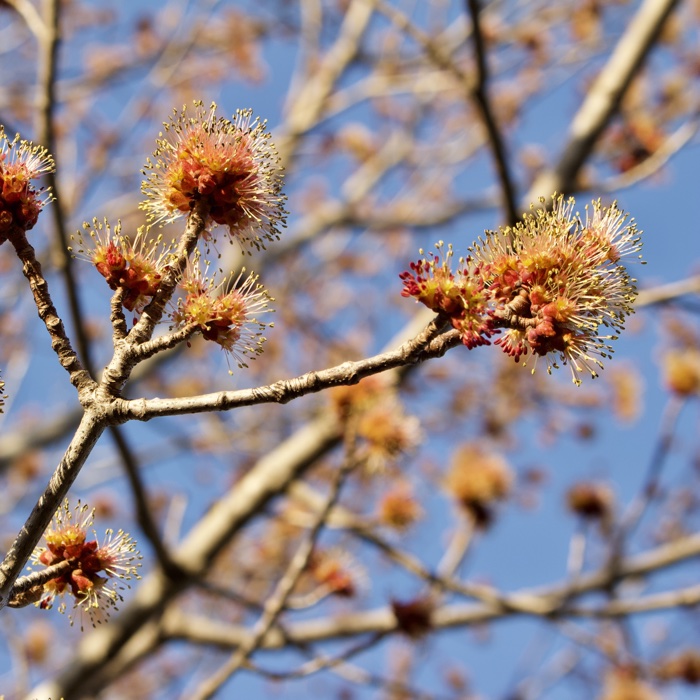Botanical collection

Red maple
Common name: Red maple
Latin name: Acer rubrum ‘October Glory’
Family: Sapindaceae
Origin: Europa e centro america
Features:
The etymology of the genus name is of Latin origin, from acer meaning sharp, pungent, referring to the leaves. Rubrum refers to the characteristic bright red colour of the leaves in autumn. Fast growing tree, large, if cultivated reaches 15-20m, columnar shape. Cultivated in Europe for its splendid autumnal colour of the leaves that go from bright red turning to yellow and orange.
It is a large deciduous tree with straight trunk and expanded foliage. Prefers fresh and moist soils. High resistance to pollution. The leaves are opposite each other, lobbed-palmate with 3 or 5 lobes, pointed and serrated apices. These are green, which becomes a beautiful yellow, orange and scarlet in autumn. The flowers are small, not very significant and red in colour, grouped in dense clusters and pedunculated.
The samara is the typical fruit of maples, with a winged seed to better spread the species. The fruits of the red maple are (double) winged schizocarp and diverge at an angle of 50 to 60 degrees. This tree of great scenic effect is suitable for parks and gardens, tree-lined rows, river banks and wetlands, wind screens, noise screens, agrarian hedges, landscape and partially suitable for marine coastal zones, industrial areas.
Curiosity: even the petioles of the leaves are especially red, a characteristic that distinguishes them from many other maples.
Selection for the park: low deck plant; trunk circumference 30-35 cm; height 7-8 metres.
Botanical information powered by AG&P
See on the map


